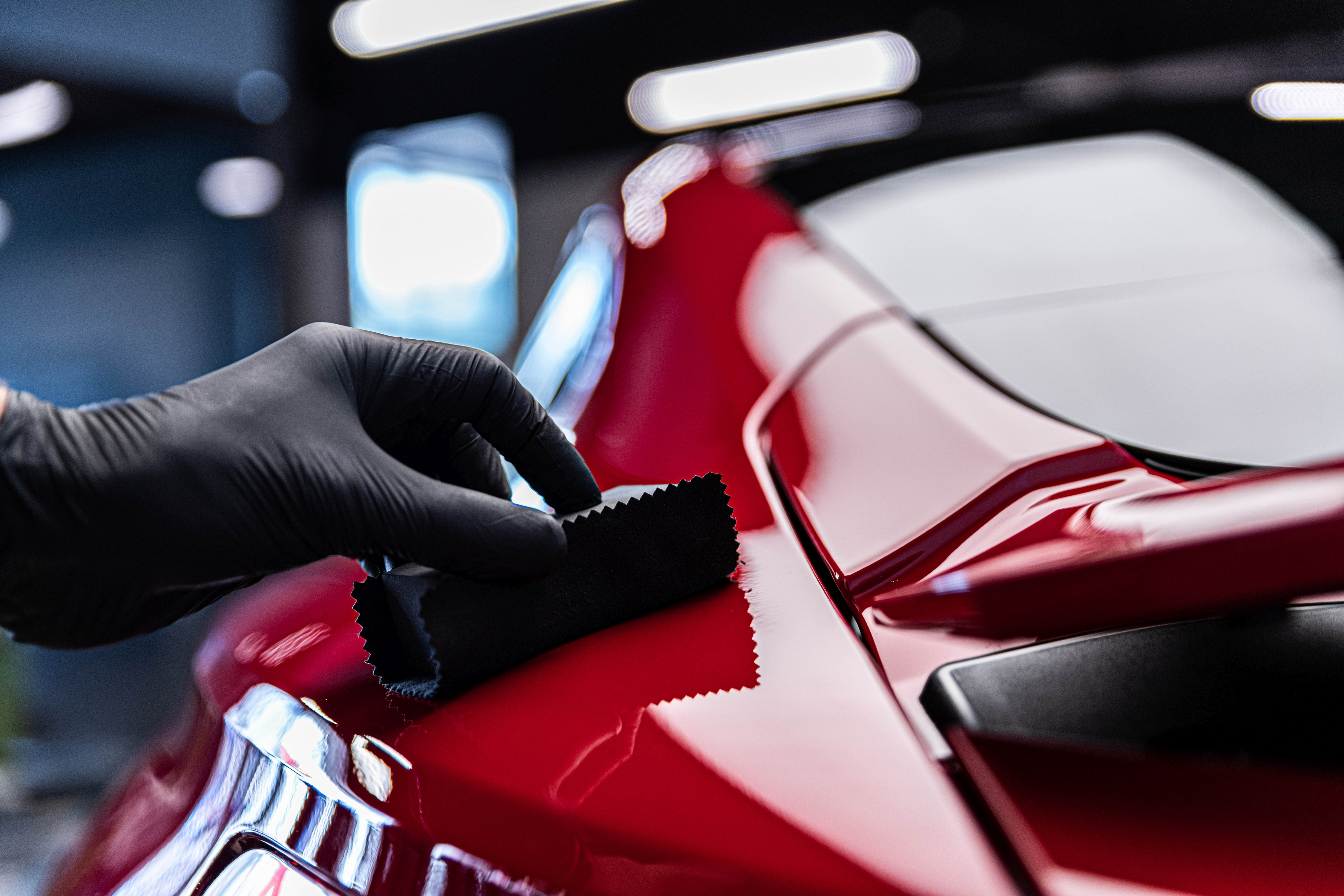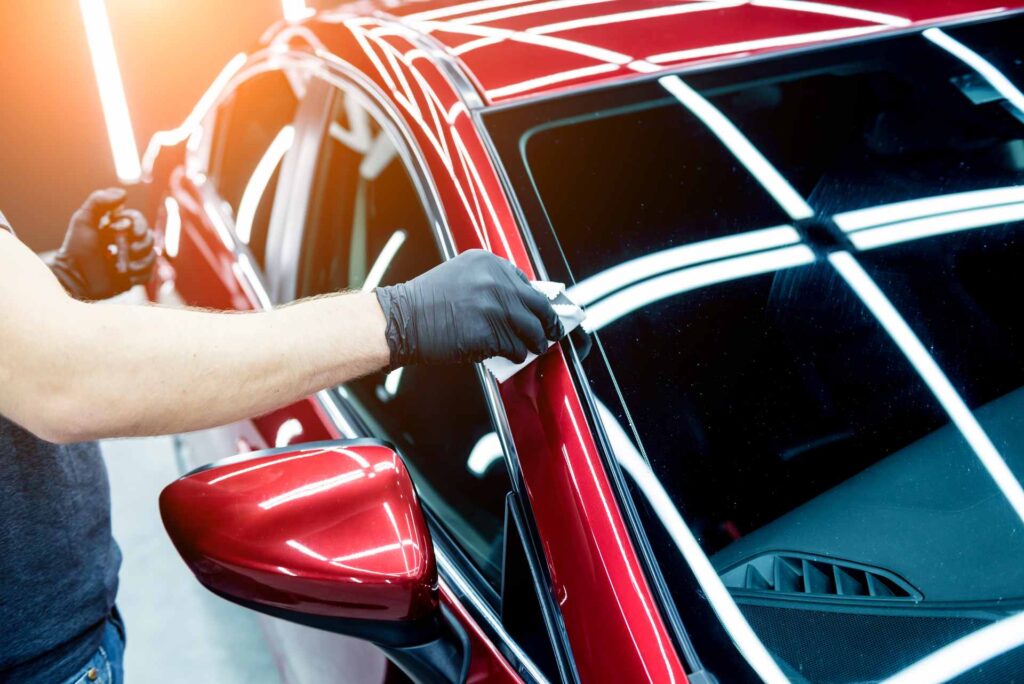Ceramic Covering vs. Traditional Wax: Which Supplies Better Long-Term Protection?
The dispute in between ceramic layers and traditional wax for automobile security has actually garnered substantial interest among automotive enthusiasts and professionals alike. While both satisfy of protecting paint, their differences in resilience, application, and long-term maintenance prices may influence a customer's choice. Ceramic finishings flaunt exceptional long life and resistance to ecological variables, yet the complexity of their application questions regarding ease of access and usefulness. As we check out these contrasting choices, it comes to be important to think about not just the instant advantages but additionally the ramifications for lorry care over time.
Review of Ceramic Finishing
Ceramic covering has actually gained substantial popularity amongst vehicle fanatics and detailers alike because of its advanced safety high qualities. This ingenious technology is created to develop a resilient, hydrophobic guard over a vehicle's paint surface, dramatically enhancing its resistance to environmental pollutants such as dust, UV rays, and chemical stains. Unlike typical wax, which provides a short-term layer of protection, ceramic layers bond at a molecular level with the paint, supplying resilient durability-- usually prolonging beyond 2 years with proper upkeep.
The application procedure involves precise preparation of the car's surface, consisting of cleansing and polishing to guarantee ideal attachment. As soon as applied, the coating remedies to develop a robust layer that not only includes depth and gloss to the paint yet also simplifies maintenance. With its hydrophobic homes, ceramic finish allows water and dirt to glide off more easily, minimizing the regularity of laundries and minimizing the threat of swirl marks.
Furthermore, ceramic layers are available in various formulations, allowing customers to choose products customized to their specific requirements and preferences. Overall, ceramic covering stands for a substantial innovation in paint security innovation, delivering exceptional performance compared to standard options.
Summary of Standard Wax
Typically concerned as a staple in automobile treatment, wax offers as a prominent choice for those looking for a simple technique to boost and shield their lorry's paint - ceramic coating. Automotive wax normally consists of all-natural active ingredients, such as carnauba, or synthetic compounds, created to produce a safety layer on the surface of the paint. This layer not only improves the automobile's gloss and radiate but additionally offers a barrier versus environmental contaminants
The application of wax is normally easy to use, making it easily accessible for both professionals and Do it yourself fanatics. Once applied, wax requires a treating duration, after which it sets to develop a protective shell.
Nevertheless, while wax is effective for enhancing the visual charm of a lorry, it is necessary to keep in mind that the protection it provides may necessitate a lot more constant reapplication contrasted to alternate products, such as ceramic finishings. Overall, standard wax remains a popular alternative for those prioritizing convenience of use and instant visual enhancement.
Resilience and Longevity Comparison
While both ceramic finishings and standard wax offer safety benefits for automotive paint, their toughness and durability differ substantially. Conventional wax, typically made from all-natural carnauba or synthetic polymers, generally provides a protective layer that lasts approximately 3 to 6 months. This relatively short life expectancy necessitates regular reapplication to maintain optimal security.
In contrast, ceramic finishes are crafted from innovative nanotechnology, developing a covalent bond with the paint surface area. This leads to a robust, hydrophobic layer that can endure for two to 5 years, depending upon the item and environmental problems. The premium sturdiness of a knockout post ceramic layers is credited to their chemical framework, which supplies boosted resistance to scrapes, UV rays, and oxidation.

Security Against Environmental Aspects
Securing an automobile's paint from ecological variables is important for maintaining its look and value in time. Automobiles are constantly exposed to a range of components, consisting of UV rays, bird droppings, tree sap, acid rain, and roadway grime, all of which can compromise the honesty of the paintwork.
Ceramic coverings offer a durable protection versus these environmental aggressors. Unlike standard wax, which can break down rapidly under UV exposure, ceramic layers create a long websites lasting, hydrophobic layer that resists the hazardous results of sunlight and environmental pollutants. This innovative technology develops a chemical bond with the lorry's surface, offering premium defense that lasts for several years, even in rough problems.
Traditional wax, while much easier to use, typically requires constant reapplication and uses restricted resistance to contaminants and UV rays. With time, it can damage down, leaving the paint susceptible to scrapes and oxidation. In contrast, ceramic coatings keep their protective qualities longer, significantly decreasing the danger of paint damage and making sure that the car preserves its visual allure. Therefore, ceramic coverings are progressively recognized as the exceptional selection for lasting defense versus ecological variables.
Application and Upkeep Distinctions
The methods of application and subsequent maintenance for ceramic layers and typical wax differ considerably, influencing the general customer experience and effectiveness of each item. Ceramic finishings call for an even more intricate application process, usually entailing surface area preparation that consists of cleaning, sanitizing, and brightening the automobile. As soon as the surface prepares, the ceramic covering is applied in a regulated setting, frequently needing specialist knowledge to guarantee proper treating and bonding to the paint.

While both items improve vehicle look, the longer-lasting defense used by ceramic finishings might warrant their first investment, in spite of the even more requiring application process. Conversely, conventional wax stays a preferred selection for those seeking an easier, albeit short-term, remedy.

Final Thought
Finally, ceramic coatings show substantial advantages over traditional wax in regards to toughness and environmental protection. With a life-span extending two to 5 years and exceptional resistance to UV rays, dirt, and chemical discolorations, ceramic coverings supply an extra reliable service for lasting lorry maintenance. The application process might need specialist expertise, the resulting price financial savings and minimized frequency of reapplication highlight the value of ceramic coatings for those seeking optimal vehicle security.
The dispute between ceramic layers and typical wax for automobile protection has garnered considerable attention amongst automotive lovers and specialists alike. Unlike standard wax, which provides a momentary layer of defense, ceramic layers bond at a molecular level with the paint, providing long-lasting sturdiness-- frequently expanding beyond two years with correct maintenance.
While both ceramic finishes and standard wax offer safety benefits for auto paint, their longevity and long life differ dramatically. For automobile enthusiasts looking for long-lasting defense, ceramic layers provide a compelling benefit over traditional wax items.
In conclusion, ceramic finishings show considerable benefits over typical wax in terms of resilience and ecological security.